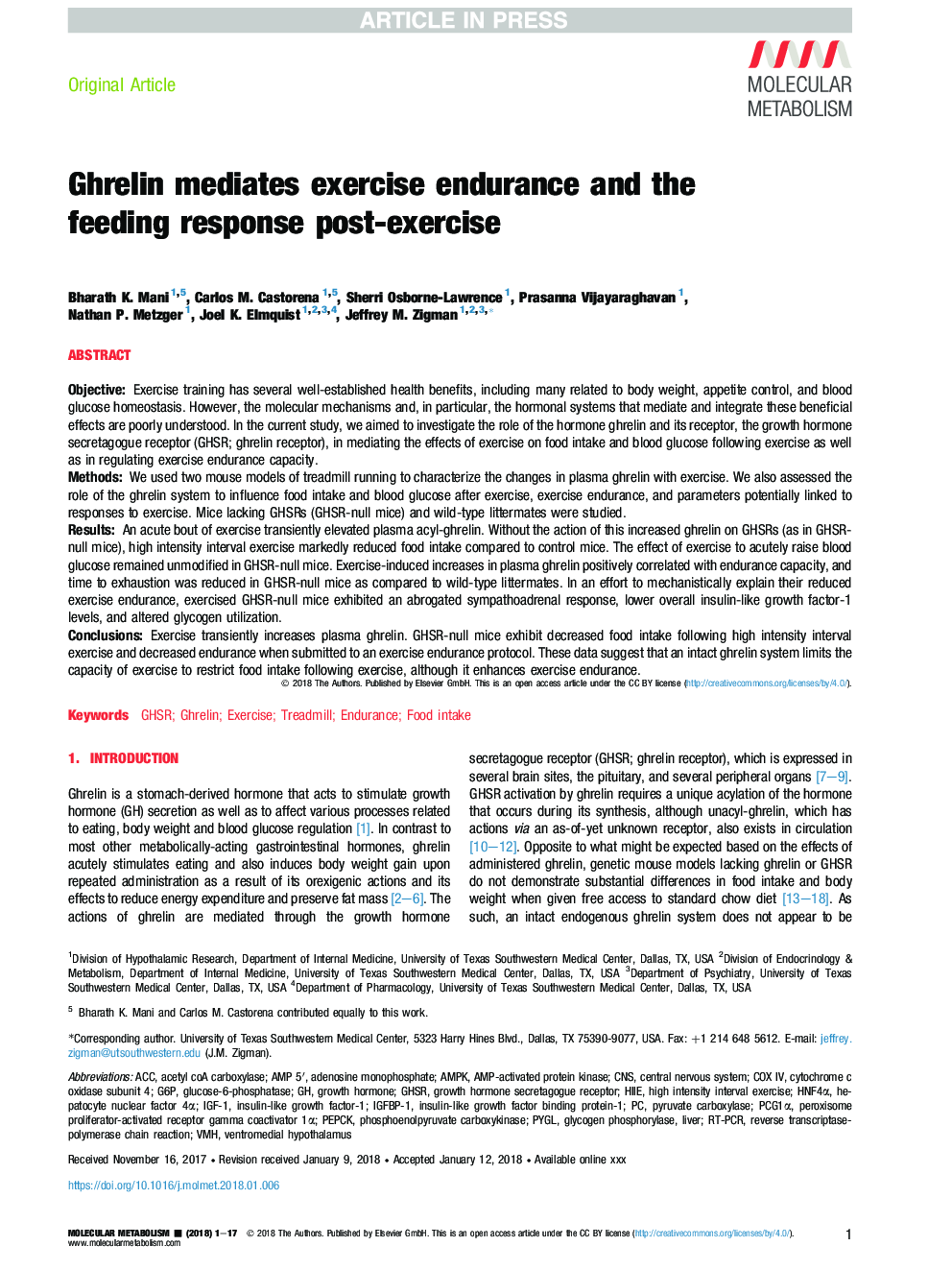| Article ID | Journal | Published Year | Pages | File Type |
|---|---|---|---|---|
| 8674295 | Molecular Metabolism | 2018 | 17 Pages |
Abstract
Exercise transiently increases plasma ghrelin. GHSR-null mice exhibit decreased food intake following high intensity interval exercise and decreased endurance when submitted to an exercise endurance protocol. These data suggest that an intact ghrelin system limits the capacity of exercise to restrict food intake following exercise, although it enhances exercise endurance.
Keywords
PEPCKHigh intensity interval exercisePYGLCOX IVCytochrome c oxidase subunit 4HNF4αG6PIGFBP-1VMHAMPKGHSRIGF-1ACCRT-PCRAMP-activated protein kinaseadenosine monophosphateacetyl coA carboxylaseinsulin-like growth factor-1EnduranceTreadmillCNScentral nervous systemhepatocyte nuclear factor 4αphosphoenolpyruvate carboxykinasefood intakeGrowth hormoneVentromedial hypothalamusReverse transcriptase-polymerase chain reactionexerciseperoxisome proliferator-activated receptor gamma coactivator 1αInsulin-like growth factor binding protein-1pyruvate carboxylaseGhrelinglucose-6-phosphatasegrowth hormone secretagogue receptor
Related Topics
Life Sciences
Neuroscience
Endocrine and Autonomic Systems
Authors
Bharath K. Mani, Carlos M. Castorena, Sherri Osborne-Lawrence, Prasanna Vijayaraghavan, Nathan P. Metzger, Joel K. Elmquist, Jeffrey M. Zigman,
